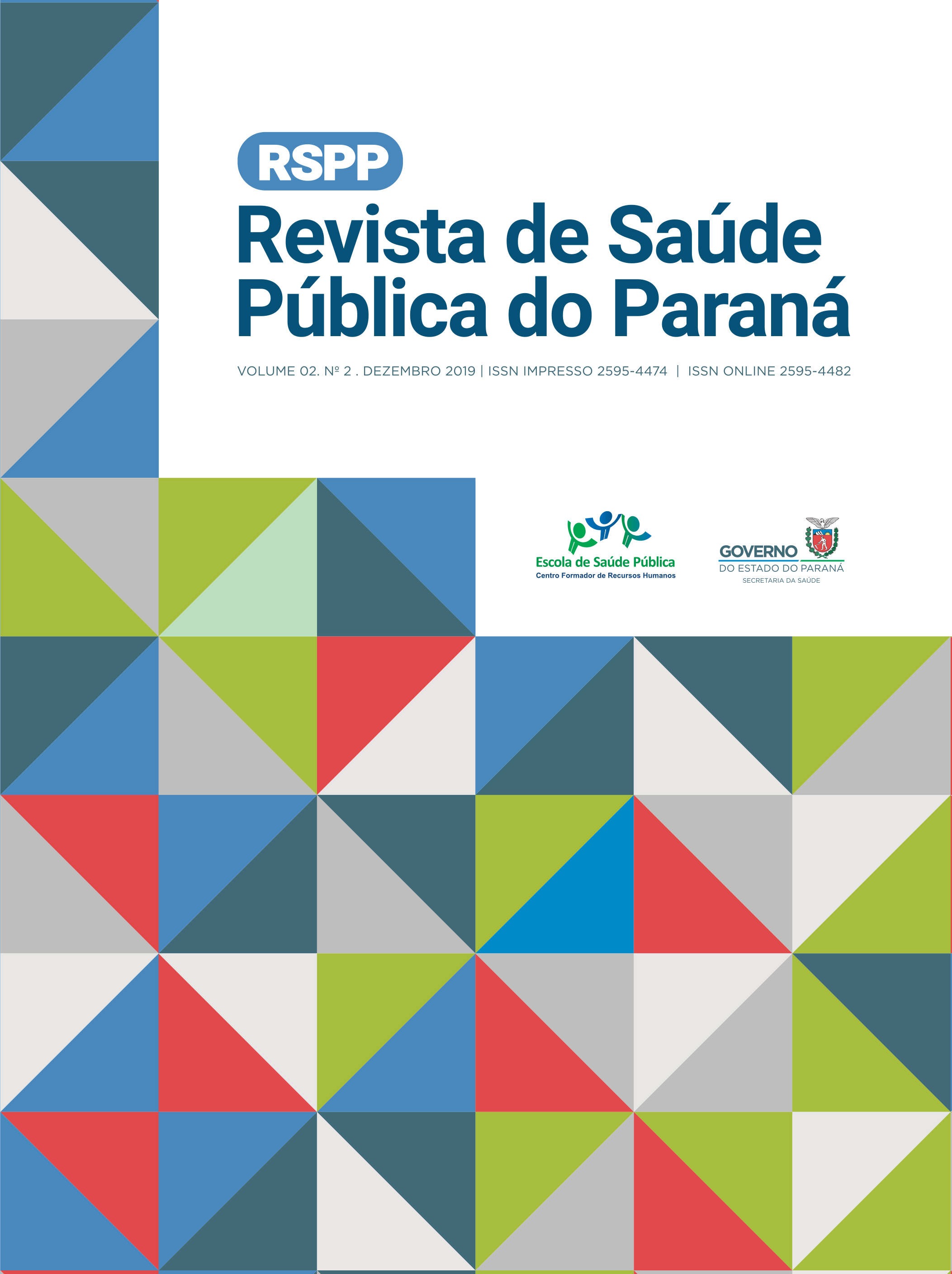Fatores sociodemográficos de pacientes HIV em uso de terapia antiretroviral e sua associação ao índice de desenvolvimento humano municipal
Resumo
O objetivo do trabalho foi avaliar fatores sociodemográficos e laboratoriais dos pacientes infectados pelo HIV em uso de terapia antirretroviral (TARV) associados ao Índice de Desenvolvimento Humano Municipal (IDHM). O estudo envolveu 4.900 pacientes de 116 municípios do Paraná, atendidos no período de 2012 a 2015. Os pacientes foram divididos em três grupos de acordo com o tamanho e o IDHM do município de residência. Cidades de pequeno porte/IDHM médio apresentaram taxas mais elevadas de mulheres, indivíduos mais jovens e baixa escolaridade, quando comparadas com as cidades de grande porte/IDHM alto. As taxas totais de resposta imunológica, virológica e completa à TARV foram de 71,9%, 68,2% e 57,1%, respectivamente, com melhores resultados para o grupo vivendo em municípios de grande porte/IDHM alto. Apesar dessas diferenças, as respostas imunológica e virológica foram semelhantes entre os grupos, sugerindo que o grau de desenvolvimento do município não está associado com a efetividade da terapia para o HIV-1.
Referências
2. Boletim epidemiológico: HIV Aids 2018[Internet].Brasília: Ministério da Saúde. Vol. 49,no. 53, 2018 [citado em 2019 Out 6]. Disponível em: http://www.aids.gov.br/pt-br/pub/2018/boletim-epidemiologico-hivaids-2018.
3. Silva RAR, Duarte FHS, Nelson ARC, Holanda RR. AIDS epidemic in Brazil: analysis of current profile. Re. enferm UFPE on line. 2013;7(10):6039-46.
4. Galvão J. Brazilian policy for the distribution and production of antiretroviral drugs: a privilege or a right? Cad Saude Publica. 2002;18(1):213–9.
5. Department of Health and Human Services. Guidelines for the use of antiretroviral agents in HIV-1-infected adults and adolescent. [Internet]. Bethesda,Maryland: Office of AIDS Research Advisory Council; 2012 [citado em 2019 Out 10].Disponível em: https://aidsinfo.nih.gov/contentfiles/adultandadolescentgl003093.pdf.
6. Young JA, Psichogiou M, Meyer L, Ayavi S, Grabar S, Raffi F, et al. CD4 cell count and the risk of AIDS or death in HIV-infected adults on combination antiretroviral therapy with a suppressed viral load: a longitudinal cohort study from COHERE. Plos Med [Internet]. 2012 [citado em 2019 Out 10];9(3):e1001194. Disponível em: https://journals.plos.org/plosmedicine/article?id=10.1371/journal.pmed.1001194.
7. Lodi S, Phillips A, Fidler S, Hawkins D, Gilson R, McLean K, et al. Role of HIV infection duration and CD4 cell level at initiation of combination anti-retroviral therapy on risk of failure. PLoS One [Internet]. 2013 [citado em 2019 Out 10];8(9):e75608. Disponível: https://journals.plos.org/plosone/article?id=10.1371/journal.pone.0075608.
8. He L, Pan X, Dou Z, Huang P, Zhou X, Peng Z, et al. The factors related to CD4+ T-cell recovery and viral suppression in patients who have low CD4+ T cell counts at the initiation of HAART: a retrospective study of the national HIV treatment sub-database of Zhejiang Province, China, 2014. PLoS One [Internet] 2016 [citado em 2019 Out 10];11(2):e0148915. Disponível em: https://journals.plos.org/plosone/article?id=10.1371/journal.pone.0148915.
9. Casotti JA, Passos LN, Oliveira FJ, Cerutti C Jr. Prevalence of discordant immunologic and virologic responses in patients with AIDS under antiretroviral therapy in a specialized care center in Brazil. Rev Inst Med Trop Sao Paulo. 2011;53(6):301–7.
10. Rodrigues PHA. Political challenges facing the consolidation of the Sistema Único de Saúde: a historical approach. Hist Cienc Saude Manguinhos. 2014;21(1):37-59.
11. Moyo F, Chasela C, Brennan AT, Ebrahim O, Sanne IM, Long L, et al. Treatment outcomes of HIV-positive patients on first-line antiretroviral therapy in private versus public HIV clinics in Johannesburg, South Africa. Clin Epidemiol. 2016;8:37–47.
12. Hoffmann M, MacTARVhy S, Batson A, Crawford-Roberts A, Rasanathan J, Nunn A, et al. Barriers along the care cascade of HIV-infected men in a large urban center of Brazil. AIDS Care. 2016;28(1):57–62.
13. PNUD. O Índice de desenvolvimento humano municipal brasileiro. [Internet]. Brasília: PNUD; 2013 [citado 2018 Abr 7]. Disponível em: http://www.atlasbrasil.org.br/2013/en/download/.
14. IPARDES. Índice de desenvolvimento humano municipal segundo os municípios do Paraná:1991/2000/2010 [Internet]. Curitiba: IPARDES; [citado 2018 Abr 7]. Disponível em: http://www.ipardes.gov.br/pdf/indices/IDHM_municipios_pr.pdf.
15. Falster K, Petoumenos K, Chuah J, Mijch A, Mulhall B, Cooper DA, et al. Poor baseline immune function predicts an incomplete immune response to combination antiretroviral treatment despite sustained viral suppression. J Acquir Immune Defic Syndr. 2009;50(3):307–13.
16. Lou LX, Chen Y, Yu CH, Li YM, Ye J. National HIV/AIDS mortality, prevalence, and incidence rates are associated with the Human Development Index. Am J Infect Control. 2014;42(10):1044–8.
17. Grangeiro A, Escuder MM, Castilho EA. Magnitude and trend of the AIDS epidemic in Brazilian cities, from 2002 to 2006. Rev Saude Publica. 2010;44(3):430-40.
18. Barros CRDS, Zucchi EM, Schraiber LB, França-Junior I. Individual- and contextual-level factors associated with client-initiated HIV testing. Rev Bras Epidemiol. 2017;20(3):394-407.
19. Johnson M, Samarina A, Xi H, Madruga JRV, Hocqueloux L, Loutfy M, et al. Barriers to access to care reported by women living with HIV across 27 countries. AIDS Care 2015; 27(10):1220–30.
20. Fonseca MG, Bastos FI, Derrico M, Andrade CT, Travassos C, Szwarcwald CL. AIDS and level of education in Brazil: temporal evolution from 1986 to 1996. Cad Saude Publica. 2000;16(Suppl 1):77–87.
21. Young B, Hart RLD, Buchacz K, Scott M, Palella F, Brooks JT. HIV viral load monitoring frequency and risk of treatment failure among immunologically stable HIV-infected patients prescribed combination antiretroviral therapy. J Int Assoc Provid AIDS Care 2015;14(6):536–43.
22. Ministério da Saúde, Secretaria de Vigilância em Saúde. Protocolo clínico e diretrizes terapêuticas para Manejo da Infecção pelo HIV em Adultos, 2018. [Internet]. Brasília: Ministério da Saúde; 2018 [citado 2019 Out 7]. Disponível em: http://www.aids.gov.br/pt-br/pub/2013/protocolo-clinico-e-diretrizes-terapeuticas-para-manejo-da-infeccao-pelo-hiv-em-adultos.
23. Machado-Alba JE, Vidal X. Effectiveness of antiretroviral treatment in Colombia. Rev Panam Salud Publica 2012;32(5):360–7.
24. UNAIDS. Get on the fast track: the life-cycle approach to HIV [Internet]. Geneva: UNAIDS; 2016 [citado 2019 Out 7]. Disponível em: https://www.unaids.org/sites/default/files/media_asset/Get-on-the-Fast-Track_en.pdf.
25. Diaz RS, Inocêncio LA, Sucupira MCA, Pereira AA, Hunter J, Ferreira JE, et al. The virological and immunological characteristics of the HIV-1-infected population in Brazil: from initial diagnosis to impact of antiretroviral use. PLoS One [Internet]. 2015 [citado em 2019 Out 10];10(10):e0139677. Disponível em: https://journals.plos.org/plosone/article?id=10.1371/journal.pone.0139677.
26. Kayigamba FR, Franke MF, Bakker MI, Rodriguez CA, Bagiruwigize E, Wit FW, et al. Discordant treatment responses to combination antiretroviral therapy in Rwanda: a prospective cohort study. PLoS One [Internet]. 2016 [citado em 2019 Out 10];11(7):e0159446. Disponível em: https://journals.plos.org/plosone/article?id=10.1371/journal.pone.0159446.
27. Machado-Alba JE, González-Santos DM, Vidal-Guitart X. Effectiveness of antiretroviral treatment in patients from Pereira and Manizales. Rev Salud Publica (Bogota). 2011 Jun;13(3):492-503.
28. Viavaca F, Souza-Jr PRB, Szwarcwald CL. Coverage of the Brazilian population 18 years and older by private health plans: an analysis of data from the World Health Survey. Cad Saude Publica. 2005;21(Suppl 1):119-28.
29. Grabar S, Le-Moing V, Goujard C, Leport C, Kazatchkine MD, Costagliola D, et al. Clinical outcome of patients with HIV-1 infection according to immunologic and virologic response after 6 months of highly active antiretroviral therapy. Ann Intern Med. 2000;133(6):401–10.
30. Hofer CB, Schechter M, Harrison LH. Effectiveness of antiretroviral therapy among patients who attend public HIV clinics in Rio de Janeiro, Brazil. J Acquir Immune Defic Syndr. 2004;36(4):967–71.
31. Siefried KJ, Mao L, Kerr S, Cysique LA, Gates TM, McAllister J, et al. Socioeconomic factors explain suboptimal adherence to antiretroviral therapy among HIV-infected Australian adults with viral suppression. PLoS One [Internet]. 2017 [citado em 2019 Out 10];12(4):e0174613. Disponível em: https://journals.plos.org/plosone/article?id=10.1371/journal.pone.0174613.

This work is licensed under a Creative Commons Attribution 4.0 International License.





















